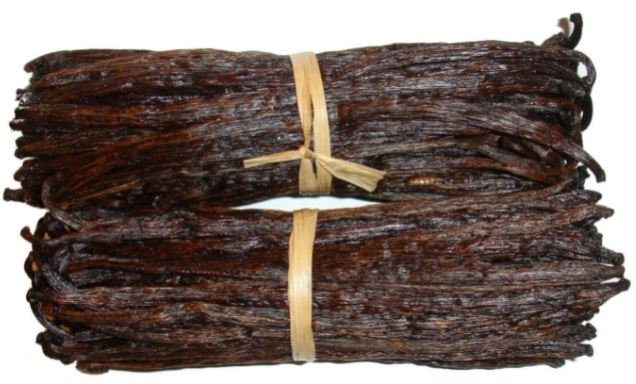 Right after the roving avocado cartels come to the vanilla hustlers. That is, in terms of the value of the crop and the difficulty of finding the good stuff.
Right after the roving avocado cartels come to the vanilla hustlers. That is, in terms of the value of the crop and the difficulty of finding the good stuff.
Cooking and baking with vanilla beans adds a robust flavor that makes you wonder how ‘vanilla’ can be a synonym for bland. Nothing that you spend $14 per ounce for should be considered plain.
Part of this is probably because cheap extracts (largely alcohol and synthetic flavors) have lowered public expectations. Don’t be fooled, utilizing vanilla beans in novel ways turns okay deserts and bread into show stoppers.
Read on to learn how to size the power of the bean for your own designs.
More Uses for Vanilla Beans
The biggest use for vanilla beans in baking centers around crafting sweet and savory flavors. However, a hidden effect of vanilla is that it helps make your goods shelf-stable longer.
This natural preservative effect combined with the sweet but not sugary quality makes vanilla beans ideal for improving cookies, bread, biscuits, and dairy products.
Sugars
While vanilla is already sweet, it adds something special to sugar. Vanilla sugar is a great first use if you pick up vanilla beans in bulk.
Vanilla sugar spices up coffee and cinnamon toast in particular.
Vanilla sugar is best used whole or with low-temp baking. The aromatic quality is lost at high heats (above 350 F).
If you have infused your sugar with ground pods, the sticky oils of the bean pods will transform the sugar into sticky clusters. These are fantastic for coatings and melting down into glazes.
Substitutions
When a recipe calls for a vanilla bean extract or paste, you can use whole beans or chopped beans and pods.
Extracts utilize alcohol and process to strip the flavors out of beans and pods but there’s always a trade-off in doing so.
Using the whole vanilla bean (roughly 2 inches of bean per 1 teaspoon) adds the same amount of flavor without the transformative additives.
For most baked goods you can find and remove the large bean husks to preserve texture, the pods will break down and infuse.
For creams and frostings, you can make up a batch with the husks and pods and then extract the husks manually. Their fibrous construction makes them hold up to most whipping and blending (as long as blades aren’t involved).
Consider Your Flavors
Like many bits of produce, where you get your vanilla changes the flavor profile considerably. Consider your end-use and shop Slofoodgroup for the best flavor infusion.
Madagascar
- Sweet and creamy with a strong presence
- great for baking bread and dispersed grains
Tahiti
- fruity, chocolate, and floral
- sharper flavors excellent in cream and candies
Uganda
- bold, aromatic, rich
- strong extracts, not-too-sweet deserts
Experiment with More
Experimenting with flavors is how the magic of cooking permeates into the future. There will always be another way to use vanilla beans, so consider the flavor and add it wherever you want.
While your busy taking your baking beyond, consider checking out more ways to go beyond by reading more of our articles.




